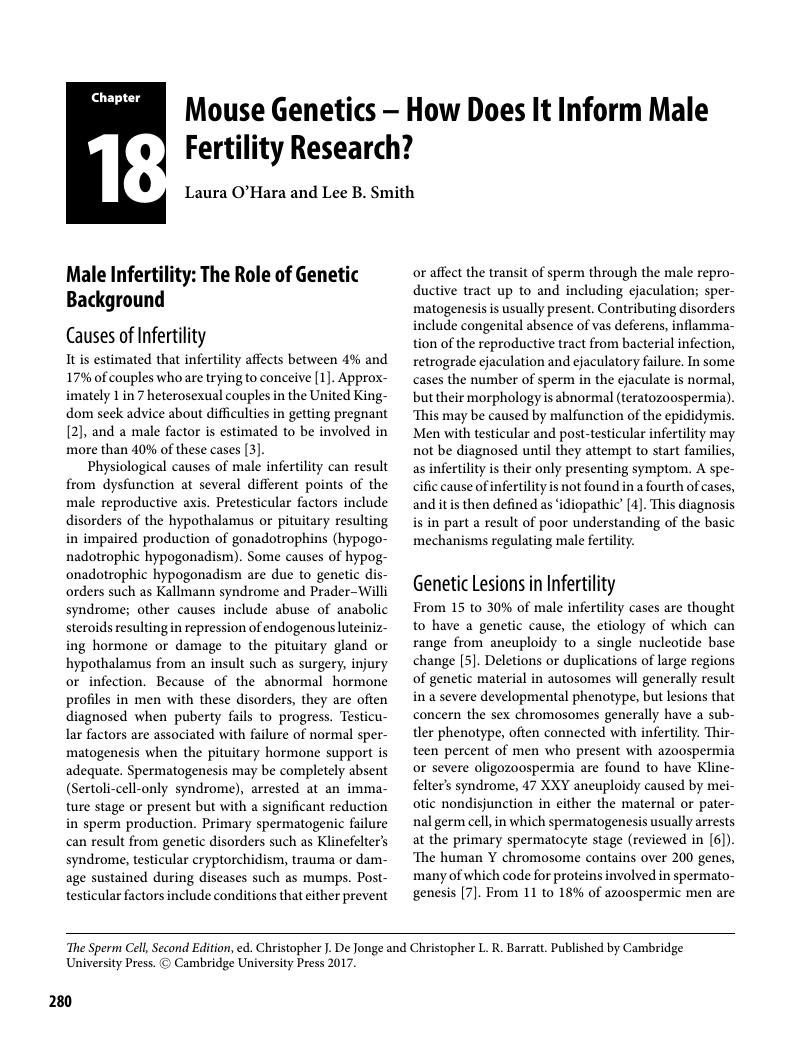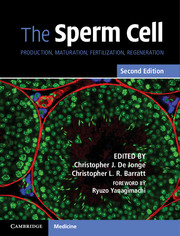Book contents
- The Sperm CellSecond Edition
- The Sperm Cell
- Copyright page
- Contents
- Contributors
- Foreword
- Preface
- 1 Spermatogenesis
- 2 Sperm Chromatin Stability and Susceptibility to Damage in Relation to Its Structure
- 3 Sperm Ultrastructure in Fertile Men and Male Sterility
- 4 Sperm RNA and Its Use as a Clinical Marker
- 5 Role of the Epididymis in Sperm Maturation
- 6 Seminal Plasma Plays Important Roles in Fertility
- 7 Physiological and Pathological Aspects of Sperm Metabolism
- 8 Regulation of Sperm Behaviour
- 9 Proteomics of Capacitation
- 10 Current Concepts and Unresolved Questions in Human Sperm Cumulus and Zona Interaction
- 11 Sperm-Specific WW-Domain-Binding Proteins
- 12 Fundamental Role for Sperm Phospholipase C ζ in Mammalian Fertilization
- 13 Male Infertility and Assisted Reproduction
- 14 The Genetic Basis of Male Infertility
- 15 The Sperm Epigenome
- 16 Environmental Factors and Male Fertility
- 17 Susceptibility of the Testis to Lifestyle and Environmental Factors During the Life Course
- 18 Mouse Genetics – How Does It Inform Male Fertility Research?
- Index
- Plates (PDF Only)
- References
18 - Mouse Genetics – How Does It Inform Male Fertility Research?
Published online by Cambridge University Press: 25 May 2017
- The Sperm CellSecond Edition
- The Sperm Cell
- Copyright page
- Contents
- Contributors
- Foreword
- Preface
- 1 Spermatogenesis
- 2 Sperm Chromatin Stability and Susceptibility to Damage in Relation to Its Structure
- 3 Sperm Ultrastructure in Fertile Men and Male Sterility
- 4 Sperm RNA and Its Use as a Clinical Marker
- 5 Role of the Epididymis in Sperm Maturation
- 6 Seminal Plasma Plays Important Roles in Fertility
- 7 Physiological and Pathological Aspects of Sperm Metabolism
- 8 Regulation of Sperm Behaviour
- 9 Proteomics of Capacitation
- 10 Current Concepts and Unresolved Questions in Human Sperm Cumulus and Zona Interaction
- 11 Sperm-Specific WW-Domain-Binding Proteins
- 12 Fundamental Role for Sperm Phospholipase C ζ in Mammalian Fertilization
- 13 Male Infertility and Assisted Reproduction
- 14 The Genetic Basis of Male Infertility
- 15 The Sperm Epigenome
- 16 Environmental Factors and Male Fertility
- 17 Susceptibility of the Testis to Lifestyle and Environmental Factors During the Life Course
- 18 Mouse Genetics – How Does It Inform Male Fertility Research?
- Index
- Plates (PDF Only)
- References
Summary

- Type
- Chapter
- Information
- The Sperm CellProduction, Maturation, Fertilization, Regeneration, pp. 280 - 296Publisher: Cambridge University PressPrint publication year: 2017



